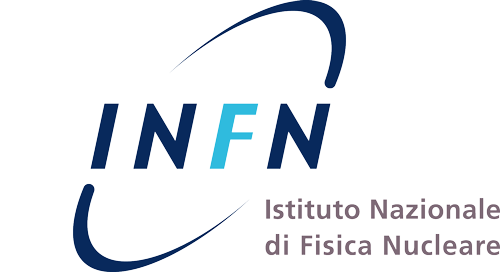PEOPLE

A NEW LIGHT
IN THE MIDDLE EAST IS ON
Interview with Gihan Kamel, researcher at the international laboratory SESAME, Jordan
Palestinian National Authority, Cyprus, Egypt, Iran, Israel, Jordan, Pakistan and Turkey met on May the 16th in Allan, Jordan, to inaugurate SESAME (Synchrotron Light for Experimental Science and Applications in Middle East), the multidisciplinary international laboratory that they have founded and built as a common project. In addition to the members of SESAME, the ceremony was attended by the Observatory Countries - Brazil, Canada, China, European Union, France, Germany, Greece, Italy, Japan, Kuwait, Portugal, Russia, Spain, Sweden, Switzerland, United Kingdom and the United States - including Italy, which stands out for being the only one that devoted an ad hoc contribution to the project, which has been allocated through the Ministry of Education, University and Research (MIUR) and managed by INFN. The Italian contribution was used to realize the four radio frequency chambers, which are fundamental parts of the electron accelerator, and the detector for one of the machine’s light lines. This was possible thanks to the collaboration of INFN and Elettra Sincrotrone Trieste. Thanks to the national contribution, moreover, the reception and supporting facilities for scientists are being finalized.
At the opening ceremony we met Gihan Kamel, a SESAME researcher of Egyptian origins, who completed her training in Italy, first at Sapienza University in Rome and then at the INFN National Laboratories of Frascati (LNF), where she worked at the Dafne Sincrotron. Today Gihan Kamel is responsible for the SESAME's infrared light line.
What’s SESAME?
SESAME is the 3rd generation accelerator of the Middle East built in Jordan following the model of CERN. This unique facility is approaching the completion after a long journey that started in 1997 when SESAME was founded. ...
NEWS
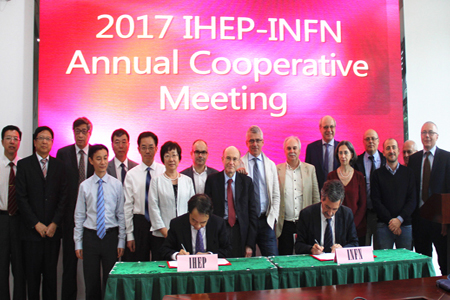
INTERNATIONAL AGREEMENTS
DARK MATTER: INFN AND IHEP SIGN AGREEMENT FOR THE NEW SPACE TELESCOPE HERD
The cooperation between Italy and China for dark matter research is confirmed and strengthened. During the bilateral meeting of May 9th between INFN and IHEP (Institute for High Energy Physics) of Beijing, the two Institutes signed the letter of interest to participate in the HERD (High Energy Cosmic Radiation Detection) experiment. ...
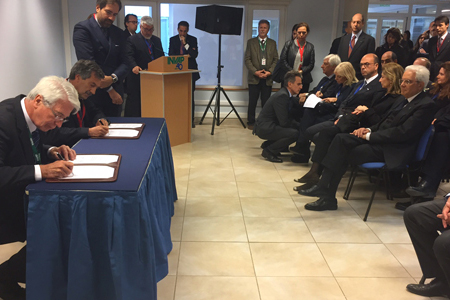
INTERNATIONAL AGREEMENTS
ASTROPARTICLE PHYSICS: AGREEMENT SIGNED IN ARGENTINA IN THE PRESENCE OF PRESIDENT MATTARELLA
It's called ANDES and will be a large underground research infrastructure, like the INFN Gran Sasso National Laboratories, the largest underground laboratories in the world dedicated to astroparticle physics. ...
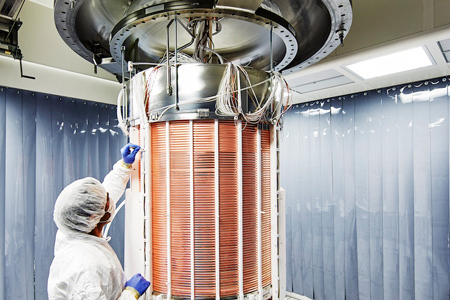
RESEARCH
XENON1T IS THE MOST SENSITIVE DETECTOR FOR THE DIRECT SEARCH FOR DARK MATTER
The highest sensitivity ever achieved in the direct search for dark matter: this is the record set by XENON1T, the data acquisition experiment at the Gran Sasso National Laboratories (LNGS) of INFN, the largest underground laboratories in the world dedicated to astroparticle physics. ...
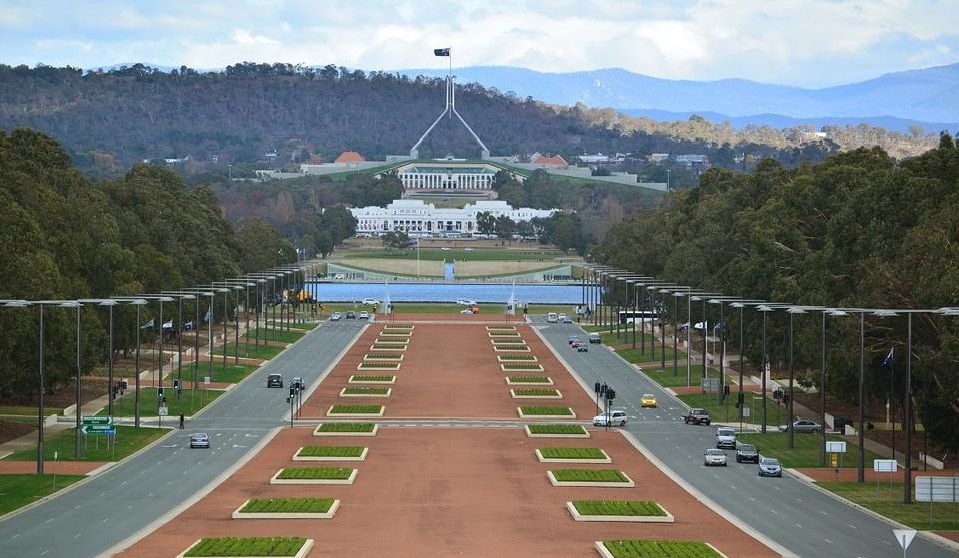
INTERNATIONAL EVENTS
THE INFN AT THE ITALY-AUSTRALIA FORUM OF SCIENCES AND INNOVATION
On 15 May 2017, the first Italo-Australian science and innovation forum was held, organised by the Italian Embassy and the Australian Department of Industry, Innovation and Science....
FOCUS ON
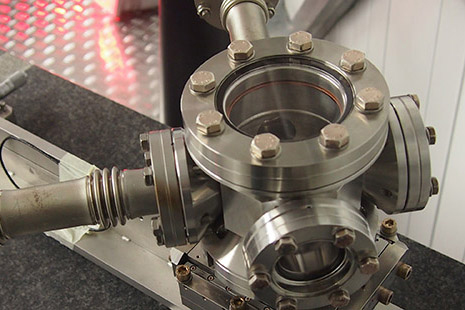 GINGERINO: THE MOST SENSITIVE METER OF THE EARTH'S ROTATION IS AT THE GRAN SASSO LABORATORIES
GINGERINO: THE MOST SENSITIVE METER OF THE EARTH'S ROTATION IS AT THE GRAN SASSO LABORATORIES
In the bowels of the Gran Sasso, under 1,400 metres of rock, in addition to the big experiments for dark matter and neutrinos research, the INFN National Laboratories are home to the world's most sensitive instrument for measuring the Earth's rotation. We are speaking of Gingerino (Gyroscopes in General Relativity), a device whose unique features will enable researchers to test a particular aspect of General Relativity: the Lens-Thirring effect. The phenomenon, one of the consequence of Einstein's Theory, predicts that in its rotational motion, the Earth deforms the spacetime grid, twisting it in the direction of its movement. The effect has never been comprehensively verified experimentally because it has virtually unperceivable implications. As a consequence of the spacetime torsion, in fact, a change in the speed of Earth's rotation of less than one billionth of a degree per second is expected: a change so small as to require measuring instruments with extremely high accuracy. ...
INFORMATION
cover image:
SESAME, the 3rd generation accelerator of the Middle East, in Jordan
Download the newsletter in pdf format
ENGLISH VERSION
ITALIAN VERSION
CONTACT
INFN - COMMUNICATIONS OFFICE
comunicazione@presid.infn.it
+39 06 6868162
